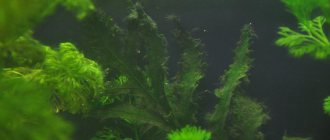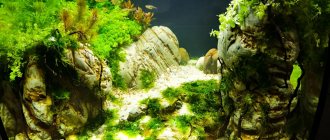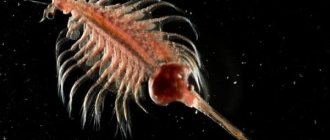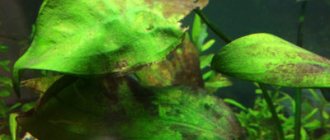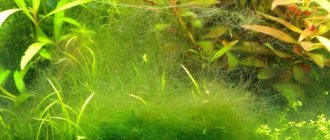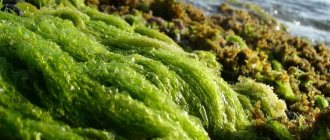Growing coralline algae gives many saltwater aquariums a pinkish-red color, and most saltwater aquarists strive for a good algae cover. Although coralline algae comes in many colors—there are more than 1,600 species—it is usually called pink, red, purple, or some shade of the same color family.
Unlike brown, green hair and red slimy algae, which often grow in an aquarium whether you like it or not, coralline algae must be physically brought into the aquarium in order for it to reproduce and colonize various surfaces.
Coralline algae can be introduced into your aquarium by adding:
- Living rock covered with coral
- Coral scrapings from another aquarium
- Commercial starter packs for growing coralline algae
The more species of coralline algae you add to your aquarium, the more you will see growing on the live rocks, substrate and walls of the aquarium. The benefit of growing coralline algae is that it outperforms the growth of nuisance algae such as hair algae, green algae, diatoms and mat algae (in a normal reef environment with the correct water chemistry). Coralline algae grows on live rock where harmful algae might otherwise grow.
Once you have some coralline algae in your tank, give it a chance to grow and spread by briefly turning off all external filters and skimmers while leaving all power heads on. Using a single-edged razor blade, scrape some coralline algae from the front and side walls of the aquarium. The water flow generated by the power head will spread the coral scrapings throughout the tank where they will continue to grow. After about an hour, turn the skimmers and filters back on.
Description of Riccia varieties
The aquarium plant is a liver moss and has no roots or trunk. This moss consists of plates and stems that are intertwined. The stalks are 1 mm thick, among them the fry usually hide from predatory fish. The interior of the Riccia island is filled with air bubbles; in the light they look like small pearls.
The color of Riccia depends on its condition and on how well the contents are organized. A faded green color indicates proper lighting; dark and brownish shades indicate a lack of light. When whole, Riccia looks like a carpet on the bottom or surface.
Attention! Riccia is distributed throughout all corners of the planet; there are more than 60 species of this algae. Despite the abundance of species, they may be completely different in appearance, depending on the growing conditions.
All types of riccia can be divided into two groups - regular and amano:
- Riccia amano or sinking is distinguished by elongated stems and plates, it is darker. There are about 20 species of sinking mosses; most often amano mosses are grown in aquariums. In the tropics, this variety grows in standing water. Planting Riccia amano is possible in aquariums of different sizes. Optimal conditions are fresh water and a temperature of 22-25 degrees. If the temperature drops by one degree, the algae may not survive. This fact should be a reason to buy a thermometer and a heater for your aquarium.
In good conditions, sinking riccia can grow over the entire surface of the aquarium. Such rapid growth can impair the supply of oxygen to the water, so the moss is regularly thinned. This procedure is needed 2-3 times during the summer.
Important! Riccia amano can be combined with other algae that also require good lighting.
- Riccia floating or regular looks more airy. This algae is planted during the appearance of the fry. Ciliates appear in it in large numbers; they are the main diet of young fish. Due to the fact that Riccia, floating on the surface, blocks the flow of light, it is necessary to place algae from shade-loving varieties on the bottom. Regular Riccia can also be placed at the bottom of the aquarium. You can secure it to a stone or driftwood using wire or mesh material. This must be done carefully, the plant is very delicate. In this form, Riccia looks beautiful and does not interfere with the inhabitants of the aquarium; it is low-growing and does not take up much space.
Floating Riccia successfully takes root in tropical aquariums; it easily adapts to warm water. In the summer, when the temperature rises, like other algae, the common algae needs to be thinned out. During the winter months it does not grow as intensively.
Chlorella
Chlorella algae are living organisms taken from nature and propagated under artificial conditions. Unfortunately, it is impossible to take live algae from nature and propagate them yourself at home due to specific technology. Someone simply collects water from the nearest lake or river and waits for the water to turn green. This method has a right to exist, but you will have to wait a very long time. Therefore, gardeners came up with an alternative method, which has become very popular. In order to grow unicellular algae with your own hands, you still have to go to the store.
- We grow chlorella algae:
- Buy a small bottle of ready-made chlorella suspension
- Dilute it with non-chlorinated water (proportions approximately 1 to 10)
- Add some complex mineral fertilizers to the resulting solution.
To quickly reproduce, chlorella algae also needs to eat, and it loves the same things as ordinary plants - nitrogen, potassium, phosphorus and microelements.
To successfully reproduce, chlorella needs a light source, so it will have to be grown under lamps.
Chlorella loves light
After some time, our solution will begin to turn green, a dark green precipitate will appear - the fertilizer is ready (it can again be diluted, propagated and used further). In this simple way, spending money for a small amount of chlorella, after a while you can get a fairly impressive volume of chlorella solution for plants. The instructions for preparing a chlorella solution are quite simple, but not everyone succeeds in growing it the first time. There may be several reasons:
- Reasons why chlorella does not grow:
- You are using unsuitable water - the water that flows from the tap contains many additives (including chlorine) that are aimed at purifying the water - that is, at destroying all living organisms in it. This water is suitable for humans, but not suitable for the propagation of chlorella - use water from a well, melt water or rain water
- Chlorella does not have enough light - in winter, without good lighting (lamp), cultivation will not work, since light has a strong effect on the reproduction of chlorella
- You bought a low-quality chlorella stock solution (the chlorella died)
- Chlorella doesn't get enough oxygen
If you grow chlorella in a plastic bottle, then do not be lazy to choose a really transparent bottle - there are bottles with a green or blue tint that do not transmit light well, which negatively affects the reproduction processes of chlorella.
Thus, if in summer the cultivation of chlorella will be easy against the backdrop of excess sunlight, then in winter it is necessary to provide an additional light source and the most transparent container.
One of the main reasons for failure when growing chlorella is a poor-quality mother solution, because chlorella is a living organism and it needs certain conditions to maintain life - if the bottle with the chlorella suspension was stored incorrectly in the store or it froze during transportation, then it may have died. The solution itself with dead chlorella will have a positive effect on plants, since all the beneficial substances remain in it, but such a solution will no longer be suitable for propagation. A situation often arises when chlorella begins to multiply and a long-awaited dark green sediment appears in the bottle, but then the process stops abruptly and things don’t go any further - the whole point is that chlorella, like any other living organism, also breathes - so there is no need to tighten the cap bottles in which you grow chlorella, otherwise it will suffocate.
The appearance of green sediment is a good sign
By the way, it is better not to fill bottles with chlorella to the neck so that the surface of contact between water and air is as large as possible - this way chlorella can breathe fully.
Suitable conditions for Riccia
When using Riccia to decorate an aquarium, it needs certain conditions:
- it is important to reduce water hardness;
- the water in the aquarium should be slightly alkaline with a pH of 7.2;
- temperature – 22-29 degrees Celsius.
Despite its unpretentiousness, the Riccia aquarium plant suffers from temperature changes and hard water. If the water becomes colder than 21 o C, the algae stops growing, it darkens and disintegrates when it dies. The same result occurs with increasing rigidity.
Attention! If necessary, you can increase the growth rate of Riccia. It is enough to cover the aquarium with glass; favorable growth conditions are created in the moist oxygen layer.
To create artificial lighting for an aquarium, it is better to use fluorescent lamps. Regular light bulbs can heat the surface of the water.
Riccia does not need feeding; it is enough to care for the aquarium according to a schedule that is built depending on the inhabitants.
Areas of application of algae
Most often, algae is used as food for people or livestock. In coastal countries, there are many popular dishes made using seaweed. Algae are cultivated to produce biomass for livestock feed. In coastal areas, algae is also used as fertilizer.
Algae rich in iodine are used in pharmaceuticals to create medicines.
The chemical industry uses algae to produce iodine, cellulose, alcohol and acetic acid.
Algae are not only unique plants that can double their mass per day under favorable conditions. They are great for use as livestock feed - in the USA, algae is pressed into briquettes, which are then sold to animals.
Despite the fact that algae is the simplest plant, a large number of different food products can be prepared from it: bread, soups, chocolate, marmalade. Seaweed is also used to make burlap and clothing fabric.
The benefits of Riccia in the aquarium
Due to the fact that algae grows quickly, many are afraid to use it in an aquarium.
However, Riccia has many positive qualities:
- It increases the amount of oxygen in the water.
- Improves metabolic processes of organic substances.
- It is a suitable environment for the development of organisms that fry feed on.
- Can be food for some aquarium inhabitants.
- Fry can hide in it if there are predatory fish.
- It can be a good place to store eggs.
Attention! Riccia and duckweed are not compatible in the same aquarium; they suppress each other's growth.
Basics of algology
Algae are unicellular and multicellular photoautotrophic plants - they use light to produce energy. Algae grow not only in water, but also in humid conditions; for example, a stone located near a reservoir can be an excellent place for algae to live.
There are a large number of different algae, they also differ in color: there are green, brown and red algae.
Algae, entering into symbiosis (mutually beneficial cooperation) with fungi, form a new organism - lichens.
Common characteristics for a large number of algae are:
- Presence of chlorophyll.
- Photoautotrophic nutrition.
- The body of algae does not have a clear demarcation and is called a thallus or thallus.
- Algae only live in moist environments—moist soil, water, or any other place with plenty of water.
Use in decoration
Riccia moss is used in many home ponds. It is used to decorate the bottom, decorating stone mounds or driftwood with it. In addition, Riccia is used to decorate fountains in greenhouses and winter gardens. Moss can be carefully tied onto a piece of driftwood with a thin fishing line, not too tightly. Nylon mesh tights are often used as fastening. They are good for decorating stones or other large elements.
Attention! In order to secure the riccia, you need to use a material that does not rust or oxidize in water.
One of the disadvantages of Riccia is its intolerance to salt water. In cases where it is necessary to treat the inhabitants of the aquarium with salt, the algae must be removed. If you don't take care of the moss, it will grow and become more of a nuisance than an ornament.
Using available materials, you can completely cover the bottom of the aquarium, and sometimes the wall of the container. Breeding Riccia is everyone’s decision; for this you need to take into account all the factors and be prepared to create the necessary conditions.
Anubias
Anubias are common among aquarium hobbyists, primarily due to the low requirements for keeping conditions. Anubias is a shade-tolerant plant; its cultivation does not require powerful lamps or additional CO2 supply. One of the attractive features of Anubias is that there is absolutely no need to plant the plant in the ground. On the contrary, it is strictly forbidden to bury the fleshy rhizome of anubias in the ground. The plant can be fixed to driftwood, stones, and decorations. There are large and dwarf forms.
Due to its very hard leaves, it is practically the only species that can withstand the onslaught of many cichlids and goldfish, so it can often be found in aquariums with such fish.
Why are plants needed in an aquarium?
Plants are necessary in an aquarium; they play an important role in the life of the inhabitants:
- plants are the lungs of the aquarium;
- create an established biological system, eliminate harmful substances and algae from the water;
- they work as a status sensor;
- it is not only a beautiful interior, but also a home for its inhabitants;
- this is food containing all the necessary substances;
- even if the owners are absent for a long time, the plants will not allow the fish to die;
- this is beauty and naturalness.
In addition to absorbing gas, they feed on all the harmful substances that fish emit. They process all vital processes into fertilizers for their own growth.
If the plants begin to wilt in the aquarium, this is the first sign that something is missing in the aquarium and the condition is beginning to deteriorate. And with lush growth, the aquarium has a 100% good habitat.
Vegetation is not only beautiful, for many species of fish and shrimp it is a home and spawning ground, and fry find refuge in it.
Where to start breeding plants
Breeding aquarium plants begins with three main components, without which they cannot exist. These components include soil, fertilizing and lighting.
The choice of soil depends individually on each species. For some it is not required at all, and some plants live only in a thick layer.
When growing vegetation for sale, it is not recommended to skimp on the substrate, since it contains all the necessary substances for the proper growth and development of plants.
The selected soil should contain several useful substances, the main ones being iron, magnesium, calcium and phosphorus.
Plants living in the soil require a layer thickness of at least 3 cm; for some species the height should be about 5 cm. This layer of soil makes it possible to quickly take root.
When the sprout sits in the ground, it must be pressed at the base with pebbles or small decor, but under no circumstances should a sinker be tied to the roots.
Water temperature plays a big role in the growth of aquarium vegetation. It should be controlled; each type of plant has its own optimal temperature. For some it may be +16, and for others +35 degrees.
Temperature control is especially necessary if aquariums are placed on a windowsill, since cold may emanate from the window, which will cool the water. To control the temperature, a thermometer is lowered into the aquarium, and if necessary, a special device with a heating sensor is installed.
The full cultivation of aquarium plants largely depends on feeding. Modern stores provide a large selection of various fertilizers for vegetation. As a rule, they are produced in tablets, which are crushed and applied under the root system once a month.
The dosage of such fertilizers is calculated as one tablet per aquarium volume of 50 liters.
All fertilizers nourish and strengthen newly planted plants. They promote rapid growth and stimulate the formation of a strong root system. They help them take root after transplantation and improve resistance to diseases.
But regardless of the type of plant, the aquarium must be illuminated for at least 12 hours. With this duration, the plants will feel good and perform all the necessary functions. The choice of lighting should be based on brightness. The average brightness should be 1.2-1.5 W per liter of water.
For the growth of underwater vegetation, the presence of red and yellow colors is necessary. But in order not to harm your own health with such lighting, it can be diluted by adding blue-colored lamps to the aquarium.
Functions
Living vegetation in a fish house has a number of very useful properties that cannot be replaced using artificial decor.
The underwater plants themselves will also emit carbon dioxide during their life activity, but its percentage will be compensated by the amount of substance absorbed during the day. At night, it is still recommended to purify using a compressor.
- Maintaining the nitrogen cycle. To implement this, it is necessary to plant fast-growing flora in the aquarium, which will reduce the ammonium concentration during the start-up period and at the initial stage of keeping fish. Ammonium levels increase due to increased excrement and can be fatal for some species. Plants with long stems are able to absorb some of this substance, minimizing harm to the inhabitants of the aquarium.
If the acidity of the water increases, another deadly compound is formed - ammonia. Already at pH levels above 7, ammonia can be harmful to pets. Therefore, plants are needed that, feeling comfortable in an acidic environment, absorb excess substances.
When the nitrogen cycle is established in the aquarium through the process of absorbing oxygen and the above-mentioned compounds, the frequency of water changes will change. The main goal of this procedure - reducing nitrate levels - will be achieved by the plants, and water changes can be done less frequently.
- Fighting algae. Algae, which can form on filtration systems and tank walls over time, compromises both the aesthetics and functionality of the aquarium. It is aquatic vegetation of a higher class, absorbing the substances necessary to feed the algae, which over time gets rid of them from the container with fish.
- A food source for the inhabitants of the aquarium. To diversify the diet and activate the development processes of fish, the leaves of aquarium plants will not be superfluous in their diet. By eating them in small quantities, the inhabitants of the reservoir strengthen the body. However, if the fish are herbivores, make sure they do not eat too much vegetation from the tank. This can be achieved by replacing grass with suitable feed.
- Decorative function. The advantage of living aquarium flora is the change in their appearance during the process of growth and development. Plants can branch and form entire bushes, pleasing to the eye. The growth process itself is also quite fascinating to watch.
Live plants for the home aquarium are divided into different types:
- fast-growing flora with elongated stems;
- slow-growing, which sometimes have long stems, but in most cases are ground cover or bush-like;
- floating - they do not take root in the aquarium and simply float in the water column;
- moss-like - cover the bottom, forming a layer resembling moss (as their name implies);
- requiring planting in the ground;
- covering the water surface.
Reproduction of aquarium plants
Before you start creating a small subsidiary farm in an aquarium, you need to find out how plants reproduce, because... This is a very important point for selling.
A very rare way is to propagate them by seeds. It is used in rare cases, if offspring cannot be obtained otherwise. Each plant species has different seed germination rates. But the main indicator for good germination is maintaining the optimal temperature for germination.
You can simply sow marsh plants in damp soil, while hydatophytes are planted in warm water, but after they sprout they are transplanted into pots with sand and clay. Afterwards they are placed in a common aquarium, but if there are snails in it, it is recommended to cover the seedlings with gauze.
An easier and faster method of propagation is by cuttings. The young shoot of most plants very quickly gives roots and begins to bush.
Varieties such as Cryptocoryne, Echinodorus, Vallisneria and Sagittaria can be propagated by layering. They form on the uterine shoot and are easily detached from it.
If the plants do not have seeds and there are almost no young shoots, then they can be propagated by rhizomes. To do this, the root system is divided with a knife, but each rhizome must have at least one vegetative bud.
Vegetation should be planted in such a way that there is a distance between branches and roots. The optimal planting pattern is a checkerboard pattern.
How to plant plants correctly
Planting plants in an aquarium begins with preparation. After preparation, the aquarist determines the order of planting. You should start planting greenery from the background. Long seedlings are planted in the background. In the middle ground, small bushes are planted, which will line the bottom of the tank and form a continuous cover. Low algae is planted in the foreground.
Greens for an aquarium can be ground or floating. Floating algae do not need to be rooted; they can be attached to driftwood or other decor to give the aquarium a neat look and complete composition. The grass with roots must be fixed in the ground.
The roots are placed according to natural growth. If the roots of greenery grow horizontally, they are buried two centimeters from the surface. If the roots grow vertically, they are buried at a depth of 4-6 cm.
The root system must be buried carefully so as not to damage the rhizome. It is recommended to make a small hole the size of the rhizome and carefully lower the seedling. Then the root is covered with soil. To strengthen it, you can press small pebbles on the sides of the plant.
Greens with creeping roots are planted in groups of 5-6 pieces. This creates a unified composition and strengthens the seedlings in the ground. It is better to place creeping grasses a couple of centimeters from each other. The same recommendations apply to slow-growing grass.
Landing rules
Once the plants have been selected and purchased, they must be planted correctly. But before planting, they should be disinfected. This is necessary in order not to introduce harmful bacteria into the aquarium that may be in the store.
To begin with, all vegetation is washed in warm water, at a temperature of about 40 degrees, and then treated with disinfectants. To do this, you can use one of 4 means:
- Soak the vegetation for 30 minutes in a solution of potassium permanganate at the rate of 10 g. powder per 1 liter of water;
- Soak for 5 minutes in a 3% hydrogen peroxide solution;
- Dip in methylene blue for 10 minutes, 0.5 grams per 1 liter of water. blue;
- 70 gr. antibiotic ericycline per liter of water and leave for 24 hours.
After disinfection, the vegetation is thoroughly washed in warm water.
When the vegetation is disinfected, diseased leaves and twigs are removed and long roots are pruned. Trimming the root system will allow the plant to take root faster.
Plants are sorted by variety and placed in a basin of clean water. Planting in the aquarium is done before it is filled with water.
Using a spoon or stick, holes are made in the soil. The depth of the holes should be such that the roots of the plant lowered into it do not curl up, but have free space and hang down. It is not recommended to cover it heavily with soil, but the roots should not peek out.
Each sprout has a growth point, it should be on the surface. After the plants are lowered into the hole, they are covered with sand, compacting it a little. If the sprout has very short roots, then it is recommended to place several pebbles around the stem.
The planted plants are covered with gauze or toilet paper and regularly sprayed with water, preferably from a spray bottle.
When the plants are planted, settled water is added to the aquarium. It should be poured so that it does not erode the soil and expose the root system.
Floating plants simply sink into an aquarium filled with water.
Java moss
Java moss is the most common aquarium moss. Due to its unpretentiousness and rapid growth, it is used by both amateurs and professionals. Its openwork leaves, which from a distance resemble the crown of a tree, are actively used in the design of artificial reservoirs, as well as in the arrangement of spawning aquariums. Moss is placed on the bottom so that the eggs do not get to the new parents for lunch.
The stems of Java moss can reach 17 centimeters in length and are covered with miniature (no more than 2 mm in length) light green jagged leaves. With the help of rhizoids that are barely visible to the eye, it is attached to almost any surface - the plant does not need to be planted in the ground.
This type of moss feels great at a temperature of 22-27°C, in water with a hardness of 2-15 dGH and a pH level of 6.0-7.5. Rapid growth is stimulated by lighting and additional CO2.
The leaves of Java moss love clean water - the suspension can settle on the surface of the plant, clogging the pores and interfering with the flow of nutrients. Therefore, filtering aquariums with Java moss is mandatory.
To reproduce, it is enough to divide the moss colony into parts and move it to a new place. Experts also recommend periodically thinning out the thickets and removing branches on which algae have settled - in this case, the green carpet will look more well-groomed.
Plant care
Plants must be regularly inspected, old and missing leaves must be removed, if layering appears or the bushes grow strongly, they must be replanted.
For full growth, it is necessary to install a special device in the aquarium, which will release carbon dioxide into the water, which is so necessary for plants.
Since there are no fish in the plant breeding aquarium, snails can be kept in it to maintain balance. They clean the glass, loosen the soil and remove all bad leaves and twigs from the plants. In addition, snails release nitrates and gas into the water, which process plants and soften the water.
The water in the aquarium should be changed at least once a week. Water without chlorine is added to the aquarium. To do this, it should be settled or water from a well used.
Common diseases of aquarium plants
Growing aquarium plants for sale requires that they be healthy. After all, like land plants, they can get sick and die if they lack proper care.
If the plant has stunted and scanty leaves, and the plants are very elongated and have a thin stem, then they do not have enough light. To do this, it is necessary to increase the duration of daylight hours.
If holes appear on the leaves and the edges begin to curl, then they need to be fed. This indicates a lack of nutrients.
When leaf fall begins, that is, the leaves turn yellow and fall off, it is necessary to lower the water temperature and increase the supply of carbon dioxide.
Basic rules for starting a business
To begin with, it is recommended to choose those plants that are more common and will be easiest to sell.
The most popular is duckweed; it is easy to care for, grows on the surface and creates a unique look. Vallisneria is inexpensive, grows quickly, and reproduces very easily. Is an ideal option for beginners.
Elodea and hornwort create beauty, but require a little more care. They grow quickly, but layering is difficult to take root.
Also simple and inexpensive plants include Limnobium, Riccia and Yanvan moss. All of them grow quickly, do not require much effort and are easy to sell, since in addition to the low price, they create a beautiful view in the underwater kingdom.
But do not forget that the speed of sales and the cost of plants directly depends on their appearance. Plants should be lush, beautiful and without damage.
Business plan for growing vegetation
Before you start breeding aquarium vegetation, you need to draw up a business plan that will reflect all the costs.
The business plan specifies the cost of purchasing aquariums. To start, you will need 3-5 pieces, 200 liters each.
Purchase of additional equipment, filters, lighting, devices for maintaining temperature.
Then the cost of purchasing plants. You should start with the most inexpensive and unpretentious ones; they are easier to sell.
Purchase of fertilizers and soil. It is necessary to take into account the cost of electricity that will be consumed for lighting and heating water. Here the calculation is 1 watt per liter of water.
It is worth remembering that even the most unpretentious varieties of vegetation will be able to produce full growth no sooner than in a few months. During this time, a beginner will be able to gain the necessary experience in growing plants for an aquarium.
When the plants begin to multiply, you can think about the points of sale of the goods. Here you can choose one of two options.
You can look for buyers among pet stores and markets. In this case, the return on business will be 40-50%. This amount will come from the stores' revenue.
Or you can register as an individual entrepreneur and obtain a patent, which will allow you to engage in sales yourself, in which case the revenue will be much higher. This method is the easiest for beginners, as you can devote more time to working with the underwater farm.
If an individual entrepreneur is registered, then the expenses must include payment of taxes and the cost of registration itself.
Running a business of growing aquarium vegetation can be very profitable if you approach it responsibly.
Trentepoly
Trentepoly is an algae that is even less picky about growing conditions than chlorella, and in terms of beneficial properties it may be even better than chlorella. Chlorella settles on the bark of trees, turning it a “rusty” color - a similar picture (red coating) can often be seen on the bark of trees after rain.
- Preparation of trentepoly solution:
- We take pieces of old bark with a red coating from the tree
- In a warm room, fill the bark with melt water
- Add a small amount of mineral fertilizers
- Place the container on the windowsill
By the way, Trentepolya is less picky about the presence of sunlight, so it will reproduce well even in cloudy weather. After the plaque is separated from the bark, the solution must be filtered through cheesecloth and the container placed on the windowsill again.
This is what trentepoly looks like on tree bark
After just a few days, the color of the solution will begin to gradually change, which will mean the successful start of the algae proliferation process. When the solution acquires a rich green color, the mother liquor, in which there will be many living workers, will be ready - it can be diluted and processed by our plants.
Types and methods of propagation of aquarium plants
Vegetative propagation
Reproduction by daughter plants
A daughter plant is a plant that arises from an adventitious bud on any organ of the mother plant.
In a number of plant species, such as the Thai Fern, adventitious buds appear on the edges of the leaves, from which new (daughter) plants are formed.
After the leaves and roots form, they are separated or they tear off on their own and float to the surface of the water.
Daughter plants are strengthened on the substrate.
Hygrophila leaf with daughter plant
In plants from the Acanthaceae family, such as Hygrophila or Sinema, you can separate a leaf or part of it and let it float on the surface of the water. After some time, an adventitious bud will appear on the edge of the leaf and from it a daughter plant will appear, which, after the formation of roots and leaves, is separated and planted in the ground.
Some plants with a shortened stem develop a flower arrow, at the top of which an inflorescence is formed.
Flower arrow of Echinodorus pressed to the ground
In a number of Echinodorus species, daughter plants are formed in the inflorescence area, which, as a rule, grow under water. After the roots and 5-7 leaves have formed, they are separated and planted in the ground.
You can tilt the flower arrow to the ground and press it with a stone so that the daughter plant takes root.
Some species of Aponogeton also form a daughter plant in the inflorescence region, which is separated after the formation of a tuber and several leaves.
In bulbous plants, such as Crinum thailandica, daughter bulbs are formed from the axillary buds of the bulb, which separate and develop into daughter plants. After several leaves have formed, the plant is dug up and planted in a new location.
Dissection of a long rhizome with several daughter plants
In a number of rhizomatous plants, such as Acorus, Anubias, Capsula and various species of Echinodorus, young daughter plants are formed from adventitious buds on the rhizome. After such a plant produces several leaves and roots, it is separated with a sharp knife with a piece of rhizome and planted in the ground. When replanting the old rhizome of a plant with a long rhizome, you can cut off a piece from it and press it to the ground. Over time, a daughter plant is formed from dormant buds.
Aponogetones can be propagated by dividing the rhizome or tuber. To do this, the tuber or rhizome of a highly developed bush is divided into 2-4 parts with a sharp razor blade, making cuts in the vertical direction through the growth point, and charcoal powder is rubbed into the plane of the cut. These parts are planted in a well-lit place. Having recovered from the disease, the plant produces young plants from its buds.
How to propagate: breeding rules
Aquarium plants reproduce mainly vegetatively : by shoots, cuttings and division. Daughter plants should be separated from the mother plant only after they have formed a sufficient number of roots.
To obtain cuttings, cut off the side shoots or shorten the main stem. Many plants form dense rhizomes. They can be cut into pieces with buds on each and left on the surface of the water, where new plants will emerge from the buds. These vegetative propagation methods are not complicated and are applicable to almost all aquatic plants.
